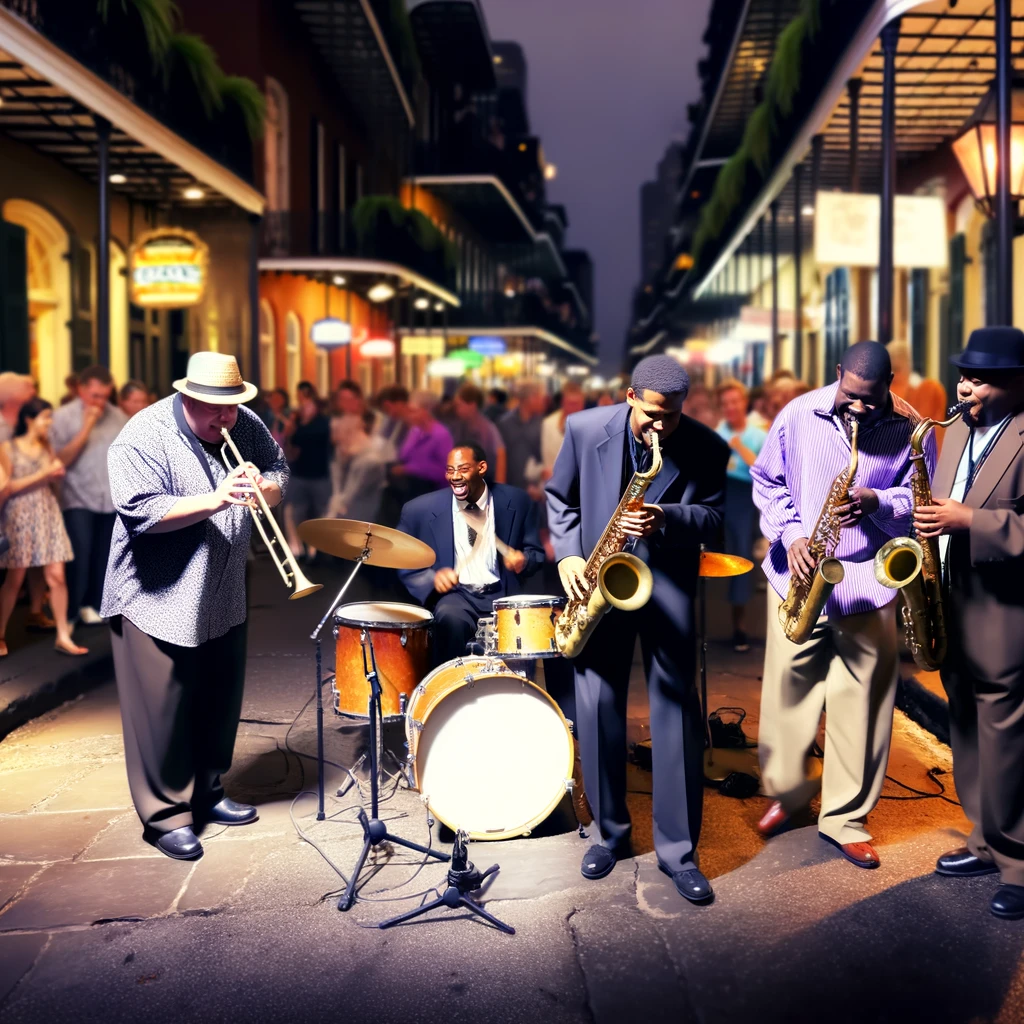
The Birth of Jazz in New Orleans
Jazz music, a genre that has mesmerized audiences worldwide, originated in the vibrant city of New Orleans in the early 20th century. This unique musical form emerged from a blend of African rhythms, blues, and ragtime, creating a sound that was both innovative and expressive.
Located at the mouth of the Mississippi River, New Orleans was a melting pot of cultures, attracting immigrants from around the world. The city's rich cultural diversity played a crucial role in the development of jazz, as musicians drew inspiration from various musical traditions. The lively street performances, parades, and dance halls were fertile grounds for the evolution of this new genre.
Influential Early Jazz Musicians
Key figures in the early jazz scene included Louis Armstrong, Sidney Bechet, and Jelly Roll Morton. Louis Armstrong, known for his virtuosic trumpet playing and charismatic stage presence, helped popularize jazz beyond New Orleans. His innovative approach to improvisation and his distinctive gravelly voice made him a household name.
Sydney Bechet, a clarinet and saxophone prodigy, was one of the first jazz musicians to take the genre overseas. His pioneering work helped to establish jazz as a respected art form in Europe. Jelly Roll Morton, a self-proclaimed inventor of jazz, was instrumental in shaping the early sounds of the genre through his compositions and performances.
The Jazz Age and the Harlem Renaissance
The 1920s, often referred to as the Jazz Age, saw jazz music reaching new heights of popularity. Speakeasies and nightclubs across the United States were filled with the sounds of jazz, as it became the soundtrack of the Roaring Twenties. The Harlem Renaissance, a cultural movement celebrating African American art and culture, further propelled jazz into the spotlight as musicians like Duke Ellington and Billie Holiday captivated audiences with their performances.
Jazz Goes Global
As jazz continued to evolve, it spread beyond the borders of the United States, captivating audiences around the world. In the 1930s and 1940s, jazz musicians began touring internationally, introducing the genre to new cultures and audiences. The infectious rhythms and improvisational nature of jazz resonated with people globally, leading to the establishment of jazz scenes in cities like Paris, London, and Tokyo.
During this period, jazz also began to influence other musical genres. Swing music, characterized by its upbeat tempo and danceable rhythms, became immensely popular, leading to the big band era. Bebop, a more complex and fast-paced style of jazz, emerged in the 1940s, with musicians like Charlie Parker and Dizzy Gillespie at the forefront.
Jazz in the Modern Era
In the decades that followed, jazz continued to evolve, incorporating elements from other genres such as rock, funk, and electronic music. Jazz fusion, a genre that blends jazz with other musical styles, gained prominence in the 1970s with artists like Miles Davis and Herbie Hancock pushing the boundaries of the genre.
Today, jazz remains a dynamic and influential musical form. Contemporary artists continue to draw inspiration from the rich history of jazz while infusing it with modern elements. Festivals and jazz clubs around the world celebrate this enduring genre, keeping the spirit of jazz alive for new generations to enjoy.
The Cultural Impact of Jazz
Beyond its musical contributions, jazz has had a profound cultural impact. It has been a vehicle for social change, a symbol of freedom and creativity, and a unifying force that transcends cultural and geographical boundaries. Jazz has also served as a platform for addressing social issues, with many musicians using their art to advocate for civil rights and equality.
In conclusion, the evolution of jazz from its humble beginnings in New Orleans to its status as a global sensation is a testament to its enduring appeal and versatility. As jazz continues to evolve and inspire, it remains an integral part of the world's musical landscape, celebrating the spirit of innovation and artistic expression.
Related Articles





